Ukraine: news bulletin August
Overview of the developments in the Ukrainian agricultural sector August 5-23
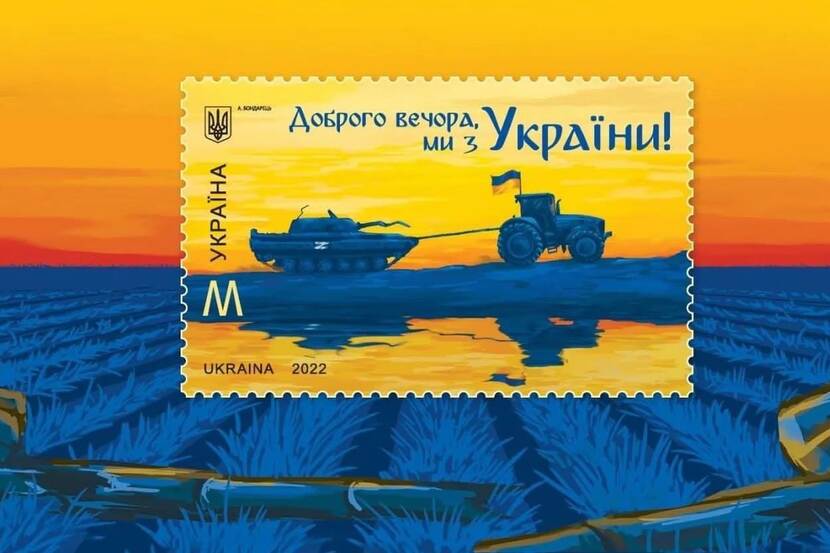
Government and policy
The Minister of Agrarian Policy of Ukraine held a meeting with 50 farmers who had to leave their farms on the occupied territories in Kherson, Luhansk, Donetsk, Zaporizhzhya and Kharkiv oblasts. Farmers talked about the state and work of enterprises located in the occupied territories, how agricultural companies help the local population and how the occupiers reformat businesses to work according to Russian legislation. As the farmers noted, from September 1, the occupants will announce the mass nationalization of all property if the farmer refuses to cooperate
Government started the transfer of reclamation systems from the Ministry of Environment to the management of the Ministry of Agrarian Policy. Dividing the functions of managing the infrastructure of water management and water resources between the Ministry of Agriculture and the Ministry of Environment started. From now on, the State Fisheries and Melioration Agency will work on: restoration and increase of irrigated land areas; attraction of investments in the reconstruction and construction of reclamation systems; stimulating water users to create organizations of water users and state operators of reclamation systems; construction of an effective tariff policy for irrigation and drainage services; creation of state support programs for land reclamation development.
Government renewed privatization of state alcohol producing plants and bakeries. It will take place with the simplified procedure. The new owners will have to pay the outstanding debts of the companies.
Agrarian associations approach the government to solve the problem of the possibility of reserving workers for agricultural works vs mobilization to the army. The solution was not found yet.
Ukraine will update its legislation about pesticides and agrochemicals to bring it in line with the EU directives.
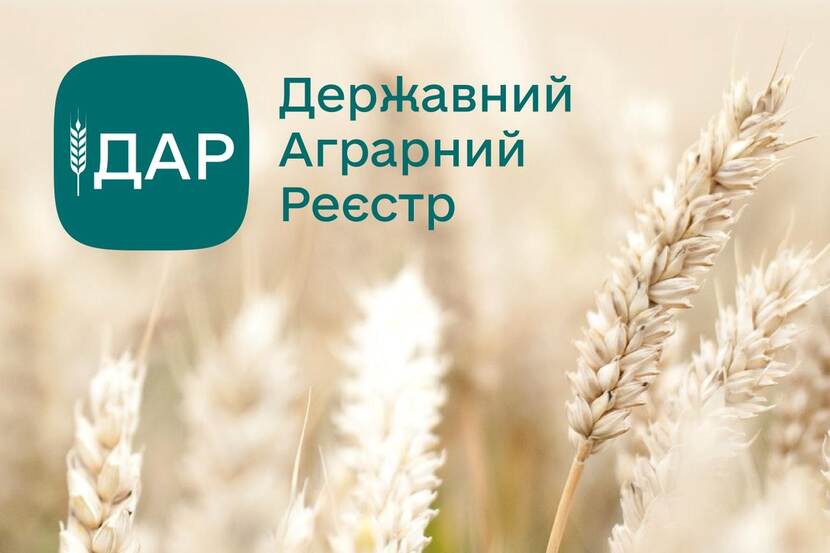
Foreign support to Ukraine
With EU support, Ukraine has launched the State Agrarian Registry, an online platform for farmers’ support. The SAR (dar.gov.ua) is the single digital hub for agricultural producers in Ukraine. It works similarly to Farm Registers, as they exist in all EU Member States. Eligible farmers registered in the SAR will be able to apply for state subsidies, targeted, subsidized credit programmes as well as loans and technical assistance from EU and other international donors. The government approved the procedure for using funds from the state budget to support small farms and agricultural producers. The total amount of the program is UAH 1.5 billion. The project is financed from the state support of the European Union. Small farms and other producers of agricultural products that are entitled to receive budgetary funds must comply with, including the possession and/or use of from 1 to 120 hectares of agricultural land or the availability of from 3 to 100 heads of cattle (cows) identified and registered in accordance with the law. Funds will be provided to farmers registered in the public agrarian register and only once. UAH 3,100 will be paid for one hectare of agricultural land (but not more than UAH 372,000), as well as UAH 5,300 for a dairy cow (but not more than UAH 530,000). During the 1,5 weeks since the launch of the State Agrarian Registry more than 3000 agricultural enterprises are registered in application. The majority of them are from Lviv, Kyiv, Kyrovograd and Vinnytsia region.
The EBRD is providing a EUR 10 million A/B loan to Lviv Bank (Lviv) for lending to small and medium-sized enterprises (SME), including those in food security sectors and relocated to the west of Ukraine. The loan falls within the EBRD’s Resilience and Livelihoods Framework (RLF) for companies and countries affected by Russia’s war on Ukraine, which began on February 24. With donors and partners, the EBRD has pledged to invest EUR 1 billion this year into the Ukrainian economy.
The USAID Program for Agrarian and Rural Development - AGRO handed over educational programs, lectures, practical and visual materials to higher educational institutions of Ukraine, which the AGRO Program developed during the implementation of pilot projects on spatial planning. 13 universities - National University of Life and Environmental Sciences, Kyiv National University of Construction and Architecture, NU "Lviv Polytechnic" and others plan to use these materials for teaching bachelors and masters in specialties related to land management, geodesy, urban planning and architecture. The materials will also be useful to those who plan to improve their qualifications in the specified fields. In addition, the scientific community is actively discussing the need to separate the spatial planning of territories into a separate integrated specialty.
The activities of the Food and Agriculture Organization of the United Nations (FAO) in Ukraine are focused on helping agricultural households, eliminating storage deficits, supporting the development of value chains, adapting to climate change, and combating soil degradation.
Since the outbreak of war, FAO developed and updated its Rapid Response Plan and is calling for $115.4 million to support nearly 1 million rural residents through agricultural assistance and food security for those most affected by the war. Within this program, FAO has already provided assistance to 80,000 people in 13 regions of Ukraine. In addition, FAO will soon provide animal feed and pilot a voucher program for the purchase of essential inputs for agricultural purposes. Support will be provided to displaced persons and host families in rural areas, as well as the most vulnerable sections of the population. In addition, FAO is working on the implementation of the Grain Storage Support Strategy to to ensure the temporary storage of 4.07 million tons of grain, which is 25% of the national need in 2022-23.
https://minagro.gov.ua/en/news/fao-stands-ready-support-ukrainian-farmers-and-rural-population
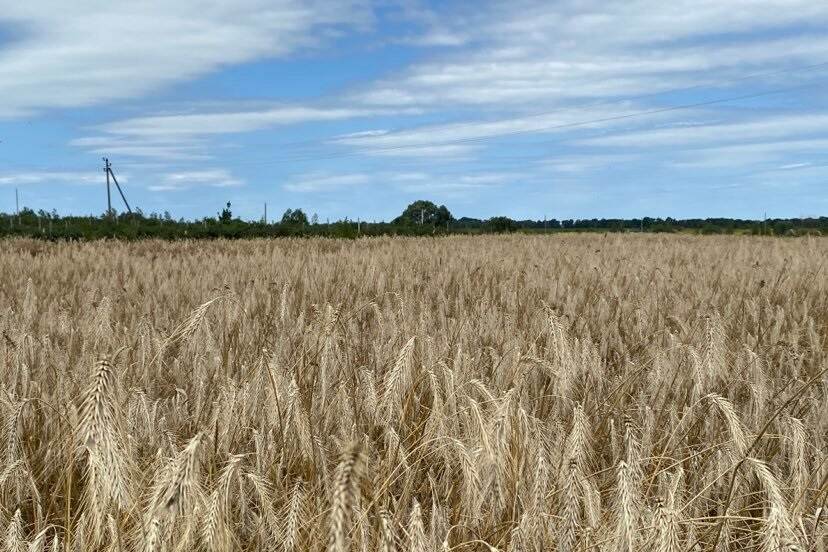
Grain
Ukrainian farmers harvested 20.8 million tonnes of grain and pulses as of August 12; grain was harvested from 49% of the planned area. Farmers brought in 15.4 million tonnes of wheat,; 4.9 million tonnes of barley; and 239,000 tonnes of peas, 2.9 million tonnes of winter rapeseed.
(In 2021 Ukraine harvested a record 106 million tonnes of grain, pulses and oilseeds, including 84 million tonnes of grains and pulses and 22.6 million tonnes of oilseeds).
In its August report, the US Department of Agriculture (USDA) increased the forecast for the harvest of Ukrainian corn in 2022/23 (July-June) compared to July by 5 million tonnes, to 30 million tonnes from 25 million tonnes, and its export estimate has been raised by 3.5 million tonnes to 12.5 million tonnes from 9 million tonnes. The estimate of domestic corn consumption in Ukraine has been increased by 1 million tonnes – from 9.5 million tonnes to 10.5 million tonnes.
In the new forecast, the department also increased the forecast for wheat exports from Ukraine in 2022/23 by 1 million tonnes, to 11 million tonnes from 10 million tonnes, while the assessment of its harvest remained at the same level – 19.5 million tonnes. At the same time, the forecast for its domestic consumption in Ukraine was also left at the same level of 10.2 million tonnes.The forecast for ending stocks of wheat at the end of the current year has been reduced – from 5.24 million tonnes to 4.24 million tonnes compared to 5.84 million tonnes at its beginning.
In 2022, the World Food Program purchased about 60,000 tonnes of wheat and 36,500 tonnes of peas from Ukraine to support global food security. In 2021, 20% of food purchased by the UN food programs came from Ukraine. In 2022, the US will contribute $68 million to the World Food Program for the purchase of Ukrainian wheat to overcome the acute global food crisis.
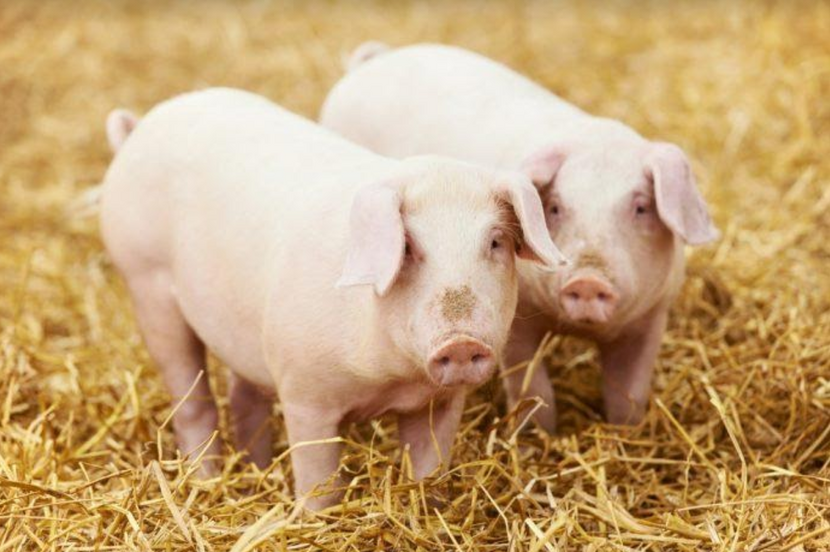
Business climate
In recent months, losses suffered by small and medium-sized businesses as a result of the war have increased significantly. Thus, 27% of small entrepreneurs surveyed by the European Business Association estimate their losses to be from up to 10 thousand dollars, 28% – in the range of 10-50 thousand, another 13% – in the range of 50-100 thousand, and 20% – more than 100 thousand, which in one and a half times more than in May. Only 5% of entrepreneurs report no losses.
28% of entrepreneurs have resumed their work in full, 37% – partially, and 16% of SMEs are still not working. Among the idle businesses, 12% plan to reopen, and 4% may close soon.
Ukraine shall implement the new animal welfare standards by 2026 within the framework of its obligations under the DCFTA with the EU. The minimum investment to implement pig welfare requirements for group housing of sows and provide the necessary space allotted per animal will cost the Ukrainian pig industry about $37.5 million.
According to the Association of Pig Breeders of Ukraine, the key issues for ensuring well-being are the separation of sows from the fourth week after insemination, the provision of the necessary space allotted per animal depending on the technological-age group, as well as the ratio of slatted and solid flooring in pens. The investments required to implement these requirements amount to approximately $22.5 million for the industry.
"Currently, about 50% (112,500 sows of industrial breeding stock) in Ukraine are kept individually during the growth phase. According to the estimates of designers and equipment suppliers, re-equipment of production facilities with individual machines for group housing of pregnant sows will cost about $200 per animal," the association said in the report.
In addition, up to 20% of the sows (about 20,000 heads) kept in groups throughout the growth do not have access to the proper free area per head. Accordingly, to comply with the requirements, enterprises will have to reduce the number of main sows, which will lead to a reduction in pork production to 10,000 tonnes per year in live weight.
At the same time, the association said that maintaining the number of breeding stock at the previous level will require operators to attract additional investments for re-equipment or construction of production sites in the amount of about $15 million (with specific investments of $4,000-5,000 per animal).
22 out 32 sugar refineries will start sugar making season in Ukraine due to war, the key problems of the sugar industry in Ukraine are the Russian military invasion and the abnormally high price of natural gas, which exceeded $2,000 per 1,000 cubic meters.
Since the beginning of 2022, Ukrainian agricultural producers signed 29,810 financing agreements with the banks within the “Affordable Loans 5-7-9%” government program for a total of UAH 55.12 million. In the period June 1 to August 17, Ukrainian banks allocated UAH 16.56 billion to 11,340 agrarians and farmers, including UAH 1.5 billion under the portfolio guarantee program. Mid-March to May 31, 2022, Ukraine had a special program for preferential lending for the sowing campaign, under this program the farmers could raise up to UAH 60 million at 0% per annum, and 80% was guaranteed by the state. In total, during the period of its work, agricultural entrepreneurs received UAH 38.51 billion in loans.
The first four orders for grants for gardens and growing berries for a total of UAH 16.8 million, grants will be received by Bonelet LLC (Odesa region), Garden of Pereyaslav LLC (Kyiv region), Organic Zakhid-Group LLC (Lviv region) and the farm Zhytni Polia (Rye Fields) (Ivano-Frankivsk region).
The Cabinet of Ministers of Ukraine allocated another UAH 103 million for non-refundable grants. 74 million UAH will be directed to the creation of 324 micro-businesses. Another UAH 29 million will be used to launch 9 new projects in the field of berry growing, horticulture and viticulture.
The VAT refund was renewed only in June 2022, but in July it already dropped to UAH 0.6 million (compared to UAH 9 billion 498.4 million in June), the Ministry of Finance of Ukraine has reported. The volume of VAT paid in July increased to UAH 35.4 billion from UAH 321.26 million in June. In fact, the farmers have to bear the costs, because the traders offer them even lower prices.
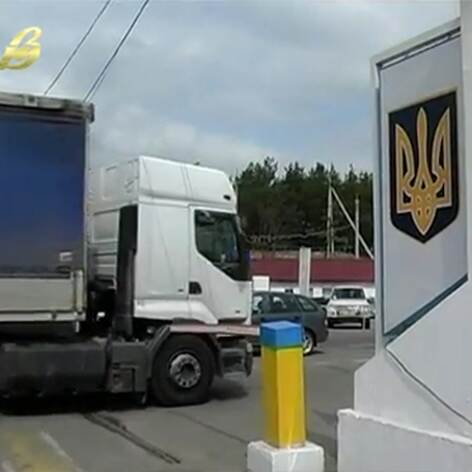
International trade
Exports of Ukrainian agri-food products in January-June 2022 amounted to $10.11 billion, which is 7% less than in January-June 2021, according to the Institute of Agrarian Economics (IAE).
Main commodity groups in Ukraine's agri-food exports in the first half of 2022 remain grains - $4.24 billion, oils and fats - $2.75 billion, oilseeds - $990 million, remnants of processing industry - $549 million, meat and by-products - $456 million.
The decline in agricultural imports to Ukraine was more noticeable: in January-June 2022, Ukraine imported agricultural products worth $2.76 billion, which is 24% less compared to the first half of 2021.
The agency stressed that agricultural and food industry products continue to dominate in the structure of total exports from Ukraine - in the six months of this year, their share was 44%.
In January-July 2022, Ukraine exported 235,100 tonnes of poultry meat and offal, which is only 8.7% less than the same period last year, according to the Union of Poultry Breeders of Ukraine association.
In monetary terms, the export of these products for the specified period increased by 36.7% in the same comparison, to $523.2 million. This increase in export earnings became possible thanks to the increase in prices in the traditional export markets of Ukrainian products, in particular the EU countries and the Middle East. The largest importers of meat and edible poultry offal from Ukraine in July 2022 were Saudi Arabia (32.2%), the Netherlands (19.1%) and Slovakia (7.3%). These countries became the largest consumers of Ukrainian poultry meat in January-July 2022.
For the period of martial law in Ukraine and 30 days after its termination, equipment and products for storing, transporting, loading and unloading grain and oilseeds are not subject to import duty.
From the technical point of view, Mykolaiv port is ready for renewing its operations.
Export of Ukraine's agri products
Exports of Ukrainian agri-food products in January-June 2022 amounted to $10.11 billion, which is 7% less than in January-June 2021, according to the website of the Institute of Agrarian Economics (IAE).
At the same time, the main decline in the volume of domestic agricultural exports began in March, after a full-scale Russian invasion of Ukraine - in March-June 2022 it decreased by 41% compared to March-June 2021, to $4.43 billion from $7.47 billion.
According to the IAE, the main commodity groups in Ukraine's agri-food exports in the first half of 2022 remain grains - $4.24 billion, oils and fats - $2.75 billion, oilseeds - $990 million, remnants of processing industry - $549 million, meat and by-products - $456 million
At the same time, the decline in agricultural imports to Ukraine was more noticeable: in January-June 2022, Ukraine imported agricultural products worth $2.76 billion, which is 24% less compared to the first half of 2021.
The agency stressed that agricultural and food industry products continue to dominate in the structure of total exports from Ukraine - in the six months of this year, their share amounted to 44%.
"Currently, the main task for Ukrainian export-oriented agribusiness is to minimize losses and adapt to constant changes in the socio-economic environment and the low predictability of world market conditions," said Bohdan Dukhnytsky, a senior researcher at the department of economics of agricultural production and international integration in the IAE.
In July 2022, Ukraine exported 2.66 million tonnes of grains and oilseeds and agricultural products by all means of transport, which is 22.7% more than in June, according to the website of the Ministry of Agrarian Policy and Food on Wednesday.
At the same time, these statistics do not take into account the export of rapeseed and products of its processing, taking into account which the export of all agricultural products from Ukraine is estimated at 3 million tonnes.
According to the Ministry of Agrarian Policy, in July, 1.1 million tonnes of corn (8% more compared to June), 412,000 tonnes of wheat (an increase of 3 times), 183,000 tonnes of barley (an increase of 7 times), 362,000 tonnes of sunflower seeds (an increase of 2 times), 141,000 tonnes of soybeans (an increase of 2 times) and 141,000 tonnes of meal (an increase of 3 times).
In addition, 15,700 tonnes of sunflower oil (15% more compared to June this year) and 15,700 tonnes of soybean oil (12% less) were delivered to buyers abroad in July
Due to the full-scale Russian invasion of Ukraine, the export rates of some types of agricultural products are inferior to those of the same period in 2021. So, in July 2021, 960,000 tonnes of wheat were exported (2.3 times more than in July this year), 1.1 million tonnes of barley (6 times more), 334,000 tonnes of sunflower oil (9% more), 21,000 tonnes of soybean oil (14% more) and 233,000 tonnes of meal (1.7 times more).
At the same time, in July last year, Ukraine supplied 13% less corn to foreign markets than in July this year – 960,000 tonnes, 47.3% less sunflower – 189,600 tonnes of seeds and 77.8% less soybeans – 31,000 tonnes.
https://minagro.gov.ua/en/investoram/export-sereals-legumes-products-their-processing-and-flour
Due to the establishment of supplies to the EU in July, Ukrainian producers managed to increase the export of butter to record volumes over the past five years, and further export volumes should decrease. The largest volumes of deliveries in July were to Poland (46%), Moldova (14%), Lithuania (8%), Azerbaijan (8%) and the Netherlands (8%)," the specialists specified.
Technical director of Cheese Academy from GB will speak at the free trainings on cheese making organized by the Ukrainian importer of cheese Ardis Group, ProCheese Academy and technical director and teacher of the Academy of Cheese, Great Britain, director and co-founder of the cheese business Urstrom Kaese GmbH, Germany will hold with support of the Swiss-Ukrainian program "Development of trade with higher added value in the organic and dairy sectors of Ukraine"
Company news
The IMC Agrarian Group has reached the winter wheat yield of 6.7 tonnes per ha, which is a record result for all years of the company's economic activity and 18% higher than in 2021.
Agrico Ukraine conducted a series of online knowledge sharing trainings and a field day in Chernihiv oblast for Ukrainian potato farmers.
Mariupol Investment Group (MIG, UTA Group), which owned the UkrTransAgro sea terminal in Mariupol before the Russian military invasion, has resumed trading agricultural products through the Danube ports.
Development of the agricultural drone industry in 2021 made it possible to create 1,100 additional jobs in the country's agriculture, while drone operators and technical experts in their maintenance became the most in demand. The demand for spraying drone services in Ukraine is growing steadily, new service teams are appearing on the market, and service operators are expanding the number of drone crews. This is reported by DroneUA, the largest importer and distributor of drones in Ukraine and Eastern Europe, who presents technological solutions from the brands XAG, EcoFlow, Pix4D, Parrot, Chasing, DroneDeploy, and AgroCares.
The value-added tax (VAT) refund amounted to UAH 0.6 million in July compared to UAH 9 billion 498.4 million in June, the Ministry of Finance of Ukraine has reported. According to the ministry, at the same time, the volume of VAT paid in July jumped to UAH 35.4 billion from UAH 321.26 million in June.
The Ministry of Finance said that such a significant increase in VAT revenues in July was due to the deadline for paying taxes and fees (no later than July 31, 2022) for taxpayers who had the opportunity to pay, but did not pay and were exempted from liability.
At the same time, the reasons for the termination of the VAT refund, which resumed only in June, are absent both in the report of the Ministry of Finance and in the reports on the website of the State Tax Service (STS).
At the same time, the State Tax Service said that "certain issues of the operation of the system for automated monitoring of the compliance of tax invoices / adjustment calculations with the criteria for assessing the degree of risks" are raised at meetings with businesses.
The deterioration of communication with the State Tax Service was recently announced at a meeting with government representatives by the European Business Association.
Alebor Group will build a grain terminal on the territory of the Hlyboka community (Chernivtsi region) for transshipment of Ukrainian agricultural products to a narrow European railway gauge and subsequent shipment to the Romanian port of Constanta.
Hryhoriy Vanzuriak, the head of the Hlyboka community, wrote on Facebook that the facility will be equipped with silos with a capacity of up to 200,000 tonnes of grain and a transshipment capacity of 3 million tonnes per year.
According to him, the first stage of the $20 million project, which will be completed in January 2023, will allow storing up to 60,000 tonnes of crops and transshipping up to 1.2 million tonnes of grain to Romania annually.
The total construction cost of the facility will be $40 million.
Vanzuriak specified that in the long term, the Vadul-Siret Terminal project offers a logistics route to the port of Constanta as an alternative to the ports of Ukraine.
As reported, Alebor Group in July announced the purchase of a land plot for the construction of a terminal for the transshipment of crops from the wide Ukrainian railway gauge to the narrow European one, as well as an elevator with a total capacity of 60,000 hectares.
The group clarified that already in September it plans to carry out daily reloading of up to 1,500 tonnes of grain from Ukrainian broad-gauge railways to European narrow-gauge railways at the acquired site. It also plans to build a grain transshipment terminal with a capacity of 60,000 tonnes by January 1, 2023, with the possibility of reloading up to 3,000 tonnes per day.
Alebor Group was established in 2014. Its founder is entrepreneur Oleksiy Kustov.
Prior to the start of the full-scale Russian invasion of Ukraine, the group of companies had the capacity to export 1.2 million tonnes of grains and oilseeds per year. The total capacity of the three elevators is 315,000 tonnes.
A bread factory for 1,000 jobs is planned to be built on the territory of the Obroshyn community near Lviv. An investor from Eastern Ukraine is completing obtaining permits and approvals and plans to start construction in the near future. The manufacturer, which previously had a network in the East of Ukraine, is forced to move its business to the Lviv Region due to the war.
Ukrainian business entities can obtain approval for the transit through the territory of Romania of live cattle, live cattle, fish, hatching eggs and other categories of live animals for which Ukraine does not have the right to export to the EU. This was reported by the State Service for Food Safety and Consumer Protection based on the results of negotiations between Ukraine and the EU and in accordance with an official notification from the competent authority of Romania. "These conditions for the transportation of live animals will be valid only for the period of wartime," the department clarifies.